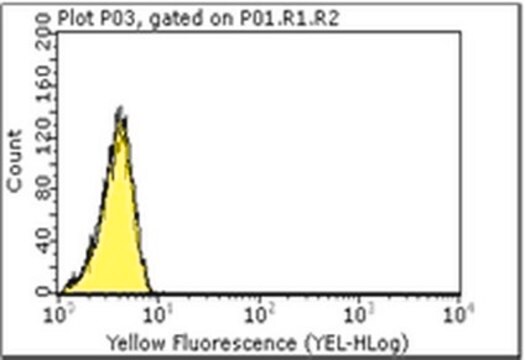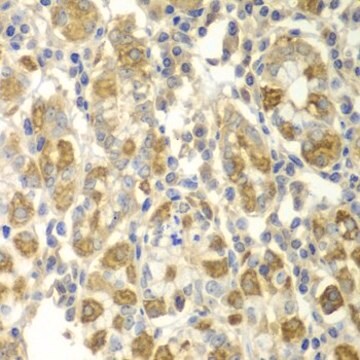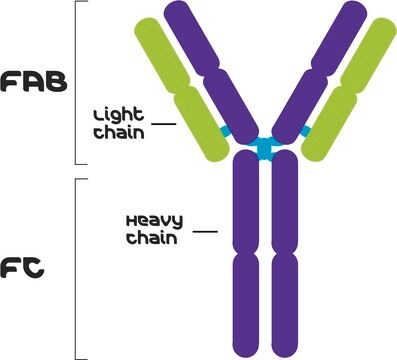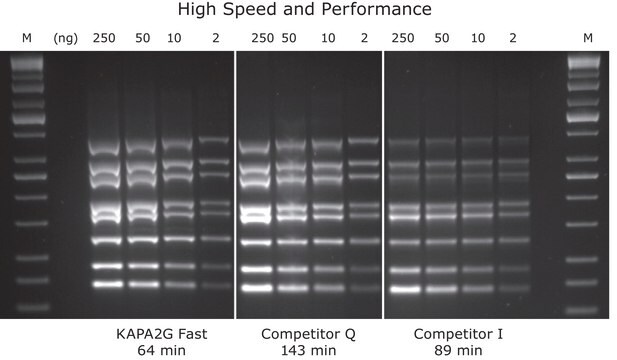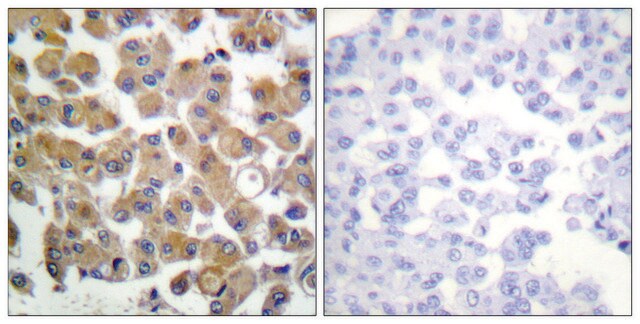MABS2317
Anti-SIRPA/CD172a Antibody, clone SE12C3
Synonim(y):
Brain Ig-like molecule with tyrosine-based activation motifs, CD172 antigen-like family member A, CD172a, Inhibitory receptor SHPS-1, Macrophage fusion receptor MyD-1 antigen, SHP substrate 1, SHPS-1, Signal-regulatory protein alpha-1, Signal-regulatory protein alpha-2, Signal-regulatory protein alpha-3, Sirp-alpha-1, Sirp-alpha-2, Sirp-alpha-3, Tyrosine-protein phosphatase non-receptor type substrate 1, p84
About This Item
Polecane produkty
pochodzenie biologiczne
mouse
Poziom jakości
forma przeciwciała
purified antibody
rodzaj przeciwciała
primary antibodies
klon
SE12C3, monoclonal
masa cząsteczkowa
calculated mol wt 55 kDa
observed mol wt ~N/A kDa
oczyszczone przez
using protein G
reaktywność gatunkowa
human
opakowanie
antibody small pack of 100
metody
ELISA: suitable
flow cytometry: suitable
immunocytochemistry: suitable
immunoprecipitation (IP): suitable
inhibition assay: suitable
izotyp
IgG1
sekwencja epitopowa
Extracellular domain
numer dostępu Protein ID
numer dostępu UniProt
temp. przechowywania
-10 to -25°C
informacje o genach
human ... SIRPA(140885)
Specyficzność
Immunogen
Zastosowanie
Evaluated by Flow Cytometry in Human peripheral blood mononuclear cells (PBMC).
Flow Cytometry Analysis: 1.0 µg of this antibody detected SIRPA/CD172a in one million Human peripheral blood mononuclear cells (PBMC).
Tested Applications
Immunoprecipitation Analysis: A representative lot immunoprecipitated SIRPA/CD172a in Immunoprecipitation applications (Seiffert, M., et al. (1999). Blood. 94(11):3633-43).
Inhibition Assay: A representative lot inhibited the binding of soluble SIRPA to cells. (Seiffert, M., et al. (1999). Blood. 94(11):3633-43; Murata, Y., et al. (2018). Cancer Sci. 109(5):1300-1308).
Immunocytochemistry Analysis: A representative lot detected SIRPA/CD172a in Immunocytochemistry applications (Seiffert, M., et al. (1999). Blood. 94(11):3633-43; Murata, Y., et al. (2018). Cancer Sci. 109(5):1300-1308).
ELISA Analysis: A representative lot detected SIRPA/CD172a in ELISA applications (Murata, Y., et al. (2018). Cancer Sci. 109(5):1300-1308).
Flow Cytometry Analysis: A representative lot detected SIRPA/CD172a in Flow Cytometry applications (Seiffert, M., et al. (1999). Blood. 94(11):3633-43).
Note: Actual optimal working dilutions must be determined by end user as specimens, and experimental conditions may vary with the end user.
Opis wartości docelowych
Postać fizyczna
Rekonstytucja
Przechowywanie i stabilność
Inne uwagi
Oświadczenie o zrzeczeniu się odpowiedzialności
Nie możesz znaleźć właściwego produktu?
Wypróbuj nasz Narzędzie selektora produktów.
Kod klasy składowania
12 - Non Combustible Liquids
Klasa zagrożenia wodnego (WGK)
WGK 2
Temperatura zapłonu (°F)
Not applicable
Temperatura zapłonu (°C)
Not applicable
Certyfikaty analizy (CoA)
Poszukaj Certyfikaty analizy (CoA), wpisując numer partii/serii produktów. Numery serii i partii można znaleźć na etykiecie produktu po słowach „seria” lub „partia”.
Masz już ten produkt?
Dokumenty związane z niedawno zakupionymi produktami zostały zamieszczone w Bibliotece dokumentów.
Nasz zespół naukowców ma doświadczenie we wszystkich obszarach badań, w tym w naukach przyrodniczych, materiałoznawstwie, syntezie chemicznej, chromatografii, analityce i wielu innych dziedzinach.
Skontaktuj się z zespołem ds. pomocy technicznej